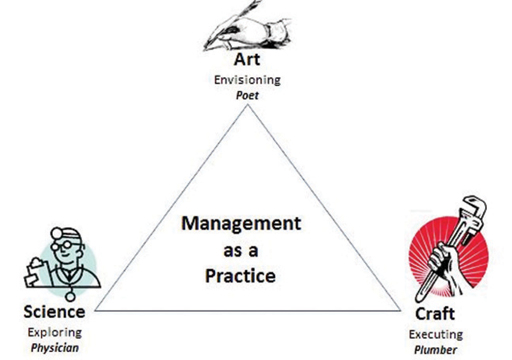Clarity on Communityship
 The moment I typed the heading 'communityship' the spellchecker
highlighted that there was no such word. It is in a way correct. It is
refreshingly new. I came across it when reading the inspiring book,
Simply Managing by one of my all-time favourites, Henry Mintzberg.
Today's column is an elaboration of it in relation to the Sri Lankan
context. The moment I typed the heading 'communityship' the spellchecker
highlighted that there was no such word. It is in a way correct. It is
refreshingly new. I came across it when reading the inspiring book,
Simply Managing by one of my all-time favourites, Henry Mintzberg.
Today's column is an elaboration of it in relation to the Sri Lankan
context.
Living in communities is nothing new for those in the East and the
West. We have Sangha societies in the Buddhist context. We also have
monasteries in the Christian context. The commonality in both is the way
a group of members a community live. It involves sharing of a common set
of values, respecting one another and a high degree of collaboration. It
also invites the members to display synergy in their actions and
reactions.
"We need to rethink management and organisation, beyond leadership to
communityship, by realising how simple, natural and healthy they can
be," says Henry Mintzberg in the concluding sentence in his seminal book
Simply Managing.
Management
"It seems that we are over-led and under-managed," says Mintzberg.
Many may disagree. Yet, you cannot undermine this candid Canadian
veteran. Having contributed to management in proposing ten key
managerial roles way back in 1971, he is sharp and sensible in his
criticism.
I had this confusion early in my management teaching stages about the
real difference between a manager and a leader, and in a broad sense
management and leadership. Thanks to global thought leaders, I now have
a clear way out.
 For me, management is a process and leadership is a phenomena. Every
manager has a 'leading' function to perform. When it expands, he or she
thinks and acts more as a leader. Mintzberg invites us to go even
beyond. In his website blog (www.mintzberg.org), Mintzberg elaborates
what he says. For me, management is a process and leadership is a phenomena. Every
manager has a 'leading' function to perform. When it expands, he or she
thinks and acts more as a leader. Mintzberg invites us to go even
beyond. In his website blog (www.mintzberg.org), Mintzberg elaborates
what he says.
"How can you recognize communityship? That's easy. You find it when
you walk into an organisation and are struck by the energy in the place,
the personal commitment of the people and their collective engagement in
what they are doing.
These people don't have to be formally empowered because they are
naturally engaged. The organization respects them so they respect it.
They don't live in mortal fear of being fired en mass because some
'leader' hasn't made his or her numbers. Imagine an economy made up of
such organizations." (www.mintzberg.org)
There is a clear invitation to shift from a 'one man show' to a 'one
team show'. In other words, we need not one superstar but a galaxy of
superstars. I have been sub-consciously promoting this at the
Postgraduate Institute of Management, and now I am more convinced when I
hear the inspirational ideas from Mintzberg.
Vital role
In creating the communityship experience in a workplace, managers
have a vital role to play. Mintzberg highlights management as a practice
involving art, science and craft. I attempted to reflect more on this
and to elaborate further. Figure 1 contains the details.
Figure 1. Management as a Practice
Source: Adapted from Mintzberg (2015)
It is interesting to identify manager as a poet, physician and a
plumber, to use three simple metaphors. He or she has to engage in
envisioning, exploring and executing. As a poet, a manager can create a
vision for future, displaying his or her leadership qualities. As a
physician, he or she can analyse, diagnose, resolve and do many other
tasks in exploring a scenario. As a plumber, he or she can attend to
operational issues that need immediate attention, in fixing things and
in executing.
One key feature in communityship is synergy. Synergy is all about
working together. It is synchronised energy in action. Stephen Covey, in
his bestseller 'Seven habits of highly effective people', describes
synergy as follows: "Synergy means that the whole is greater than the
sum of its parts. It shows that the relationship, which the parts have
to each other, is a part in and of itself. It is not only a part, but
also the most catalytic, the most empowering, the most unifying, and the
most exciting part."
"Synergy is everywhere in nature. If two plants are placed close
together for growth, the roots improve the quality of the soil so that
both plants will grow better than if they were separated. In short, one
plus one equals three or more. The challenge is to apply the principles
of creative co-operation, which we learn from nature, in our social
interactions... The essence of synergy is to value differences - to
respect them, to build on strengths, to compensate for weaknesses".
There is much food for thought indeed.
A renowned American author, Mary Austin said, "Probably we never
fully credit the interdependence of wild creatures, and their cognizance
of the affairs of their own kind." The way geese fly in 'V' shape and
the way wolves run as a flock are just two prominent examples.
Synergy we see in nature is associated with the complex term
symbiosis. It is close and often long-term interaction between two or
more biological species. In other words, a close prolonged association
between two or more organisms of different species that may benefit each
member. Way back in 1877, Albert Bernhard Frank used the word symbiosis
to describe the mutualistic relationship in lichens. It is also
described as the living together of two dissimilar organisms, as in
mutualism, commensalism, or parasitism.
'Symbotic relationship'
The term, 'symbiotic relationship' is often used in the area of
sociology. The word symbiosis was first used to describe people living
together in a community. It is, in fact, a true adaptation from the
biological meaning of 'living together unlike organisms'.
Synergy is associated with working together. Teams and groups are
often inter-changeably used to describe a set of people working
together. In perusing the literature of Organisational Behaviour,
veterans such as Stephen Robbins and Fred Luthans have identified a
group as a set of two or more people interacting and inter-dependent on
each other in achieving a common objective. A team is one step ahead. I
would simplify a team as a group with synergy.
Communityship can be viewed as a way the East and the West meet
together. It's practical nature and productive features should motivate
us to embrace it as a surefire way of achieving sustained results. Sri
Lankan managers should relate, reflect and reinforce how they act, react
and interact in fostering communityship.
The writer can be reached through
[email protected]
|

